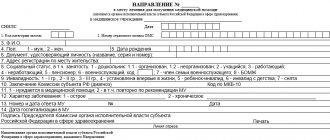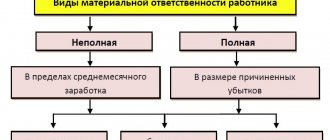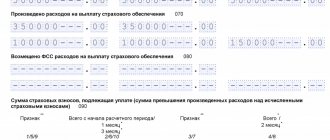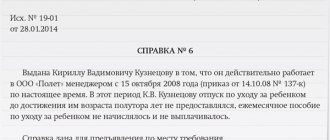Legislation on the transition to direct payments
The transition to direct payment from the Social Insurance Fund for social payments made from funds transferred to the fund by employers in the form of insurance contributions has been planned for a long time. To implement it, a pilot project has been operating in Russia since 2011 (its rules were approved by Decree of the Government of the Russian Federation of April 21, 2011 No. 294), which at the beginning of 2021 was not joined by only 8 constituent entities of the Russian Federation:
- Krasnodar region;
- Perm region;
- Moscow region;
- Sverdlovsk region;
- Chelyabinsk region:
- Khanty-Mansiysk Autonomous Okrug;
- Moscow city;
- city of St. Petersburg.
With the onset of 2021, the payment of social benefits directly from the fund will begin in these regions. And, accordingly, the offset mechanism, which made it possible to reduce the amount of payments received by the Social Insurance Fund from employers by the amount of such benefits, will no longer be used. The termination date of this mechanism is set to 12/31/2020, since after its expiration, paragraphs. 2, 8, 9. 16 tbsp. 431 of the Tax Code of the Russian Federation, which describes the procedure for interaction between the employer, the Federal Tax Service and the Social Insurance Fund in terms of reducing the volume of contributions transferred by the employer for disability and maternity insurance (clause 3 of Article 5 of the Law of July 3, 2016 No. 243-FZ “On Amendments...”).
In addition, a law amending 2 laws containing rules for the payment of social benefits made to insured persons should come into force in 2021:
- dated 07.1998 No. 125-FZ “On Compulsory Social Insurance” - in relation to payments related to accidents;
- dated December 29, 2006 No. 255-FZ “On compulsory social insurance...” - in relation to payments for disability and maternity.
The transition to direct payments will allow the fund to organize personalized accounting of expenses for social payments.
bolnichnye_po_pilotnomu_proektu.jpg
Related publications
Sick leave under the FSS pilot project in the regions participating in the experiment is paid according to a different scheme. The procedure for transition to new rules for the payment of hospital benefits is regulated by the norms of Government Decree No. 294 dated April 21, 2011 (as amended on December 1, 2018). The document provides for the introduction of a mechanism for direct payments from the Social Insurance Fund to insured individuals. The employer pays benefits only to the extent that is subject to repayment from the employer's funds; otherwise, the employer acts only as an intermediary between the employee and the Social Insurance Fund. Let us remind you that since 2021, several more regions of the country have joined the pilot project.
What changes for the employer
Benefit payments are transferred to the Social Insurance Fund:
- due to the employee’s own incapacity for work - from the 4th day of sick leave;
- caring for a sick child or other relative;
- for sanatorium-resort follow-up treatment after injury;
- for pregnancy and childbirth;
- for early registration of a pregnant woman;
- at the birth of a child;
- for child care up to 1.5 years.
The employer will continue to pay:
- disability benefits for the employee for the first 3 days of his illness - at his own expense (subclause 1, clause 2, article 3 of Law No. 255-FZ);
- payments from the federal budget made in excess of those provided for by the legislation on compulsory social insurance;
- funeral benefit;
- additional days off to care for a disabled child.
The costs of the last three types of payments (as well as the costs of preventing industrial injuries) can then be reimbursed to the employer from the Social Insurance Fund by sending there a corresponding application and documents confirming the fact of the event and the amount of expenses incurred.
In relation to those payments that go to the fund, the employer becomes the person:
- collecting all the necessary information confirming the right to them;
- sending this information to the fund - with an average number of employees of more than 25 people (determined based on the results of the year preceding the year of the event) - in the form of an electronic register; with a smaller number of employees, the register and other necessary documents can be submitted on paper;
- storing documents giving the right to payments and presenting them during an audit carried out by the fund;
- promptly (within 3 days) informing the fund about changes in the status of employees, depriving them of the right to receive benefits for child care up to 1.5 years - untimely submission of such information is fraught for the employer with reimbursement of unnecessary expenses to the fund;
- advising the employee on the issues of obtaining social insurance funds.
The form of the electronic register submitted to the fund is approved by Order of the Federal Social Insurance Fund of the Russian Federation dated November 24, 2017 No. 579, which is already used in the regions where the pilot project operates.
Termination of the use of the offset mechanism will entail adjustments to the DAM and 4-FSS report forms, from which lines indicating the presence and application of deductions will be excluded.
On sick leave certificates issued to the employee himself, the employer will no longer have to fill out the lines reserved to reflect the amount of benefits accrued by the fund and the total amount of accruals. At the same time, he will reflect all other information (the amount of average and average daily earnings, the amount of benefits paid at the expense of the employer) in the same manner.
The employer will need to withhold personal income tax only from that part of the benefit that is paid from his funds.
In preparation for applying the new procedure, employers:
- it is advisable to inform employees about upcoming changes;
- it is necessary to send to the FSS a register or documents regarding persons who, as of 01/01/2021, are recipients of child care benefits for children under 1.5 years of age.
There is no form for notification of the transition to direct payments from the Social Insurance Fund of the Russian Federation, since it is not necessary. However, if it is more convenient for you to inform employees about such a transition, you can create a free-form notice (memo) for employees with brief information about the changes in the benefit payment mechanism.
How to correct an error in a document
The employer manually fills out a paper sick leave certificate for direct payments according to the rules from Order No. 624n. Entries are made in capital letters. Start filling from the left, from the first cell.
If the contractor made a mistake when filling out, corrections are made to the form. Here's how to fix a sick note error:
- Cross out incorrect information.
- Indicate the correct information on the back of the document - the name of the column and the correct data.
- Indicate next to the correction “Believe Corrected.” Certify the corrections with the signature of the director, chief accountant. Stamp it when using it in an institution.
IMPORTANT!
If several corrections have been made to the certificate of incapacity for work in different columns, the “Corrected to Believe” visa is issued only once.
What will change for the employee?
The employee will still have to submit to the employer a set of documents confirming the right to receive benefits. The set in each specific case will be presented with its own set of papers. Its mandatory component will be an application from the employee (variants of its forms, already used in the regions of the pilot project, approved by Order of the Federal Social Insurance Fund of the Russian Federation dated November 24, 2017 No. 578), in which he must indicate how he would like to receive the amount of the benefit due to him:
- to a current account - you will need to provide its details;
- by postal transfer - you will need to reflect the recipient's postal address.
You can submit an application for payment within 6 months from the date of completion of the event that is associated with the assignment of the benefit (end of the period of release from work, completion of maternity leave, birth of a child, the child reaching the age of 1.5 years, death). If there are valid reasons, this period may be extended.
The employer, having checked the completeness of the documents submitted to him by the employee, will enter the data into the information register and no later than 5 working days will send this document to the fund. The Fund is also given 5 working days for consideration, during which it will either make a decision on payment or send a notice to the sender of the registry to provide the missing documents. The missing information must be sent to the fund within 5 working days.
The fund will pay the funds within 10 calendar days from the date it makes a decision on payment. The same rule will apply for the first payment of child care benefits up to 1.5 years old. For subsequent payments of this benefit, the period from the 1st to the 15th of the month following the month to which the benefit relates is allocated.
In case of refusal to pay, a notice of it is sent by the fund to both the employee and the employer through whom the application was submitted within 5 working days after such a decision is made.
The accrued benefit can be recalculated upward if the employee submits to the fund (through the employer) additional documents allowing this to be done, but no more than 3 years preceding the date of the request for recalculation.
If it is impossible to contact the employer (if he ceases his activities), the employee has the right to independently submit all documents for the assignment of any of the benefits directly to the fund.
Amounts overpaid to an employee may be withheld from him in the following cases:
- counting error;
- identifying intentional distortion of data affecting the amount of benefits and the right to receive them.
A benefit not received by an employee on time is paid in full, but not more than for 3 years preceding the time of application. The time limit for payments does not apply if the late payment is the fault of the employer or the fund.
FSS pilot project: how to fill out sick leave
Filling out the disability sheet is done with a black gel or capillary pen (the use of ballpoint pastes is prohibited). The medical organization enters the document code (primary, duplicate or continuation), disease code and period of incapacity. Upon receipt of a document issued by a medical institution, the employer checks it for errors and the presence of all necessary elements. If the employer makes a mistake when filling out his part of the form, he does not have the right to demand a duplicate.
The employer fills out the sick leave certificate (pilot project) in the “To be filled out by the employer” field in the following sequence:
Enter the name of the employer (in full or abbreviated version).
It is noted under what conditions the insured individual is employed - whether this is his main place of work or not. Next to the required version of the answer you need to put o.
A separate field indicates the number under which the employer is registered with the Social Insurance Fund. This parameter will help to accurately identify the policyholder in the Fund's database.
When reflecting the subordination code, you must enter the code assigned to the Social Insurance Fund division to which the employer belongs at its location.
In the regions where the FSS pilot project is being implemented, sick leave is “split” into amounts paid by employers and the Fund, according to standard rules. Different structures act as payers, but in both cases the basis is the average daily income of the insured employee. To derive this indicator, the employer registers the average earnings for two years, and the average daily income is recorded separately.
The period of incapacity to work is indicated.
When implementing the system of direct payments to the Social Insurance Fund, filling out a sick leave sheet (pilot project) differs from the usual algorithm in that the employer reflects only its part of the accruals on the sheet. The Social Insurance Fund independently calculates the benefits paid from the budget. That is, when filling out a certificate of incapacity for work, the employer leaves blank the fields with the amount of benefits at the expense of the Social Insurance Fund and with the final accruals.
The employer is obliged to indicate the full number of years and months worked by the insured person. This is necessary to determine the value of the correction factor when calculating the benefit amount.
The employer enters on the sick leave only the amount of accruals that he will pay himself. To certify the correctness of the information reflected in the sheet, the signatures of the manager and the chief accountant are affixed and a seal is affixed.
Thus, if the enterprise is registered in the region where the pilot project is applied, the sick leave is filled out in the usual manner, but the cells with the amount of the benefit from the Social Insurance Fund and the total amount of the payment are left blank.
Will the procedure for calculating benefits for temporary disability and maternity change after the start of the “Direct Payments” project?
No, the calculation procedure will remain the same, that is, in accordance with Article 14 of the Federal Law of December 29, 2006 No. 255-FZ “On compulsory social insurance in case of temporary disability and in connection with maternity” (hereinafter referred to as Law No. 255-FZ).
Will the insurance premium payment scheme change from 07/01/2019?
Yes. From 07/01/2019, payment of insurance contributions for compulsory social insurance in case of temporary disability and in connection with maternity and insurance contributions for compulsory social insurance against industrial accidents and occupational diseases, calculated in accordance with the legislation of the Russian Federation, is carried out in full without reduction by the amount of expenses for the payment of compulsory insurance coverage for the corresponding type of compulsory social insurance.
How can I fill out and submit the register?
The register must be filled out in xml format.
The algorithm for generating and transmitting the register is the same as the algorithm for sending pay slips using Form 4-FSS in electronic form.
In order to create a register, sign it with an electronic signature, encrypt it and send it to the State Administration - Sakhalin regional branch of the FSS of the Russian Federation
You can use the program
“Workstation for preparing calculations for the Social Insurance Fund” ,
developed by the Social Insurance Fund of the Russian Federation, as well as third-party software or your own programs that implement this functionality.
The registry file, encrypted and signed with an electronic signature, is sent to the regional office through a single reception point - a document download gateway at the address: https://docs.fss.ru/.
On the gateway you can view the verification status of sent registry files (file receipt, decryption and verification of electronic signature, format and logical control).
If there are format and logical errors, the file will not be accepted for consideration. Errors must be corrected and the file sent again.
If the registry has successfully completed all stages of processing at the gateway, a receipt is issued and the file is submitted for review to specialists at the regional office. If erroneous data is detected, specialists from the regional office will send the policyholder a notice of errors discovered during the processing of the electronic register, which will contain all comments to the register.
How many times must insurers send registers of information to assign a monthly child care benefit to
the State Institution - Sakhalin regional branch of the Federal Social Insurance Fund of the Russian Federation after 07/01/2019?
Let's sum it up
- Starting from 2021, the rules of the FSS pilot project, which provided for the application of social benefit payments directly from the fund, apply to the entire territory of Russia. This entails the actual abolition of the offset mechanism for determining the amount of contributions actually transferred to the fund.
- The fund is given the right to pay all social benefits, except for that part of the disability benefit that is paid from the employer’s funds. Funeral benefits, social payments from the federal budget in excess of those provided for by the legislation on compulsory social insurance, and payments for additional days off provided to care for a disabled child remain reimbursed for the employer (according to the application submitted by him to the Social Insurance Fund).
- In terms of benefits, the payment of which is transferred to the fund, employers become an intermediate link between the insured person (employee) and the Social Insurance Fund. Their functions are limited to collecting and transmitting to the fund the data necessary for calculating benefits, storing documents containing this data, timely informing the fund about the loss of the right to benefits, and advising their employees regarding the rights to payments.
- The procedure for applying for benefits will not change for the employee. He will still submit an application and a set of documents confirming his right to benefits to the employer. But the fund will review these documents, make decisions on them, calculate benefits and pay them to the employee.
Which regions are participating?
- Since 2011: Karachay-Cherkess Republic and Nizhny Novgorod region.
- Since 2012: Astrakhan, Novgorod, Novosibirsk, Tambov, Kurgan regions, Khabarovsk Territory.
- Since 2015: Republic of Crimea, Sevastopol, Republic of Tatarstan, Belgorod, Rostov, Samara regions.
- From 2021: Republic of Mordovia, Bryansk, Kaliningrad, Kaluga, Lipetsk and Ulyanovsk regions.
- From 2021: Republic of Adygea, Altai, Buryatia, Kalmykia, Altai and Primorsky Territories, Amur, Vologda, Omsk, Oryol, Magadan, Tomsk and Jewish Autonomous Regions.
- From 2021: Kabardino-Balkarian Republic, Republic of Karelia, North Ossetia, Tyva, Kostroma, Kursk regions.
- From January 1, 2021: Republic of Ingushetia, Mari El, Khakassia, Chechen, Chuvash Republics, Kamchatka Territory, Vladimir, Pskov, Smolensk regions, Nenets and Chukotka Autonomous Okrugs.
Benefit payment procedure
In general, the direct payment system looks like this:
- An employee experiences an insured event and sends an application to the employer for payment of a certain benefit.
- The employee also provides the documents necessary to assign benefits, and the employer sends this package to the Social Insurance Fund.
- With the direct payment system, the employer pays only 3 days of sick leave, and the remaining payments are made by the territorial branch of the Fund.







